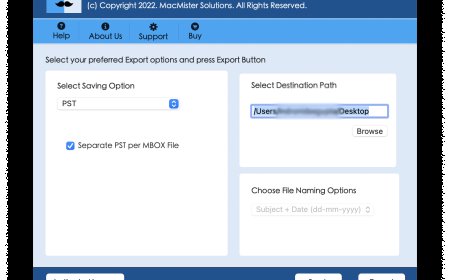Ethereum Staking Explained: Ultimate Guide to Maximizing Returns in 2025
Ethereum staking is transforming how investors earn passive income from crypto. Discover everything you need to know in this in-depth 2025 guide to Ethereum staking.

What is Ethereum Staking?
Ethereum staking is the process of locking up your Ether (ETH) to help validate transactions on the Ethereum network and earn rewards in return. This system replaces traditional mining with a more energy-efficient consensus mechanism called Proof-of-Stake (PoS).
With Ethereum 2.0's launch, staking became central to maintaining network security. Validators are randomly chosen to confirm new blocks and, in return, receive staking rewards. In short, staking allows ETH holders to earn passive income while supporting the Ethereum ecosystem.
Unlike mining, which requires expensive hardware and consumes massive energy, staking only needs a minimum ETH deposit and a validator setup or access to a staking pool. This makes Ethereum staking more accessible and sustainable.
How Does Ethereum Staking Work?
Ethereum staking operates on the Proof-of-Stake model, where validators are selected to propose and validate new blocks based on the amount of ETH theyve staked and how long they've held it.
Heres how it works:
-
You stake ETH by depositing it into the Ethereum staking contract.
-
The network selects validators at random to propose blocks.
-
Honest validators earn ETH rewards; dishonest ones risk slashing.
Slashing is a mechanism that penalizes validators for malicious activity or software failures. To avoid this, participants must ensure they stake through trusted services or maintain proper validator setups.
Each staked ETH contributes to network consensus and security, and staking participants are rewarded proportionally to their stake and uptime.
Benefits of Ethereum Staking
Ethereum staking comes with several compelling benefits:
-
Earn Passive Income
By staking your ETH, you receive regular rewards (paid in ETH) without actively trading or managing your crypto. -
Support the Network
Stakers contribute to Ethereums decentralization and security, ensuring smooth transaction processing and scalability. -
Eco-Friendly Approach
Proof-of-Stake significantly reduces energy consumption compared to Proof-of-Work, making it a greener option. -
Long-Term Gains
As Ethereum adoption grows, the value of staked ETH and its staking yield may increase, offering strong potential for future returns.
Risks and Challenges of Staking ETH
Staking ETH isn't without risks. Here are the key ones to consider:
-
Volatility: ETH price can fluctuate wildly, affecting the fiat value of your staked assets and rewards.
-
Lock-Up Periods: Depending on how and where you stake, your ETH could be locked for weeks or months.
-
Slashing Risk: Improper validator behavior or technical mishaps can lead to penalties or partial fund loss.
-
Centralization: Over-reliance on big exchanges for staking can threaten network decentralization.
These risks can be managed with proper due diligence, staking on reliable platforms, and understanding how the underlying protocol works.
How to Stake Ethereum: Step-by-Step Guide
There are multiple ways to stake ETH in 2025:
1. Solo Staking (Full Validator)
-
Requires at least 32 ETH.
-
Run your own node using software like Prysm or Teku.
-
Offers full control but requires technical skills and 24/7 uptime.
2. Pooled Staking (Staking Pools)
-
Stake less than 32 ETH.
-
Join decentralized pools like Rocket Pool or Lido.
-
Share rewards with other stakers; easier and more flexible.
3. Exchange Staking
-
Platforms like Coinbase, Binance, and Kraken offer user-friendly staking.
-
Simply deposit ETH and opt-in for staking.
-
May involve higher fees and centralized risk.
Heres a quick comparison:
| Method | ETH Needed | Skill Level | Flexibility | Reward Control |
|---|---|---|---|---|
| Solo Staking | 32 ETH | Advanced | Low | Full |
| Staking Pools | <32 ETH | Beginner | High | Shared |
| Exchange Staking | Any amount | Beginner | Medium | Limited |
Top Ethereum Staking Platforms in 2025
Choosing the right staking platform can significantly impact your returns and experience. Here are some of the best Ethereum staking platforms in 2025, each with its own pros and cons.
1. Coinbase
-
Pros: Trusted brand, user-friendly interface, institutional-grade security.
-
Cons: High fees, centralized control, limited staking customization.
2. Binance
-
Pros: Low fees, flexible lock-in periods, high liquidity.
-
Cons: Regulatory uncertainty in some regions, potential withdrawal delays.
3. Kraken
-
Pros: Strong reputation, transparency, supports unstaking.
-
Cons: Limited availability in some countries, moderate fees.
4. Lido
-
Pros: Liquid staking tokens (stETH), decentralized pool, low entry barrier.
-
Cons: Smart contract risk, reliance on third-party validators.
5. Rocket Pool
-
Pros: Decentralized, allows staking with as little as 0.01 ETH, earns RPL incentives.
-
Cons: Complex user interface, new compared to major exchanges.
Each platform suits different users. For example, beginners may prefer Coinbase or Binance, while more decentralized-focused users will appreciate Lido and Rocket Pool.
Ethereum Staking Rewards: What to Expect
Ethereum staking rewards fluctuate based on various network and validator factors. In 2025, the typical Annual Percentage Yield (APY) ranges from 3% to 5%, though this can change.
Factors Influencing Rewards
-
Total ETH staked: More ETH staked = lower yield per staker.
-
Validator performance: Uptime and correct behavior improve rewards.
-
Network usage: High activity can lead to higher transaction fees and more earnings.
Compounding and Restaking
Some platforms allow automatic compounding, where rewards are restaked to increase returns over time a strategy known as reinvestment staking.
| Staking Method | Estimated APY |
|---|---|
| Solo Validator | 5.0% |
| Lido (Liquid Staking) | 4.5% |
| Exchange Platforms | 3.04.0% |
Ethereum 2.0 and the Merge: Impact on Staking
The Ethereum Merge in 2022 marked the shift from Proof-of-Work (PoW) to Proof-of-Stake (PoS), transforming how Ethereum is secured and operated.
Key Effects on Staking:
-
Validators replaced miners to secure the network.
-
Energy consumption dropped by ~99.5%.
-
ETH issuance was reduced, making ETH more deflationary.
Following the Shanghai Upgrade in 2023, stakers could unstake ETH freely, increasing liquidity and flexibility. This has made staking even more attractive for long-term holders and institutions.
Liquid Staking: The Future of ETH Staking?
Liquid staking has gained massive traction because it solves one major problem: illiquidity during the lock-up period.
How It Works:
-
Users stake ETH via a service like Lido.
-
In return, they receive a derivative token (e.g., stETH) representing the staked amount.
-
stETH can be traded, used in DeFi, or held, offering liquidity and utility.
Benefits:
-
Trade or use your staked assets while earning rewards.
-
No lock-up stress.
-
Integrated with other DeFi platforms for extra yield farming.
As Ethereum's ecosystem grows, liquid staking is poised to be the go-to method for new users and DeFi investors alike.
Staking Ethereum with a Hardware Wallet
For those prioritizing security, staking ETH using a hardware wallet is a wise choice.
Popular Options:
-
Ledger Nano X
-
Trezor Model T
Steps to Stake Securely:
-
Connect your wallet to a validator interface (like StakeWise or Rocket Pool).
-
Ensure firmware is up-to-date.
-
Sign all staking transactions securely via the wallet.
Hardware wallets keep your private keys offline, reducing the risk of hacks or phishing attacks during the staking process.
Tax Implications of Ethereum Staking
Staking rewards are typically treated as taxable income in many countries, meaning you must report them.
What to Know:
-
Reward value is usually calculated based on the market price at the time of receipt.
-
In some regions, capital gains tax applies when you sell staked ETH or liquid staking tokens.
-
Record-keeping is essential: Use tools like Koinly, CoinTracker, or Accointing for accurate reports.
Check with a local tax advisor to ensure you're compliant with regional laws.
Common Mistakes to Avoid When Staking ETH
Staking might seem simple, but pitfalls exist. Avoid these common missteps:
-
Choosing Unverified Platforms Always stake through reputable platforms.
-
Ignoring Fees Watch out for hidden fees in exchange or pool staking.
-
Overlooking Lock-up Terms Make sure you know when and how you can unstake.
-
Not Backing Up Keys Losing access to a wallet with staked ETH is irreversible.
Be cautious, informed, and deliberate in your staking decisions.
Ethereum Staking vs. Other PoS Cryptocurrencies
How does Ethereum compare with other major Proof-of-Stake (PoS) cryptocurrencies?
| Feature | Ethereum | Cardano | Solana | Polkadot |
|---|---|---|---|---|
| Network Size | Largest | Large | Medium | Medium |
| APY | 35% | 46% | 68% | 1012% |
| Security | High | High | Medium | Medium |
| Lock-up Period | Varies | None | None | 28 days |
| Ecosystem | Strong | Growing | Fast | Stable |
Ethereums strength lies in its massive network, ecosystem, and innovation speed, making it a reliable long-term staking option despite lower yields compared to smaller projects.
Is Ethereum Staking Worth It in 2025?
Absolutely if you're in it for the long game.
Ethereum staking offers a solid blend of passive income, network contribution, and potential capital appreciation. While the yield isn't the highest among PoS coins, Ethereums ecosystem and market cap make it a more stable and promising investment.
You should consider staking ETH if:
-
You plan to hold ETH for the long term.
-
You want to earn rewards while securing the network.
-
You understand the risks and pick the right staking method.
FAQs About Ethereum Staking
1. Whats the minimum ETH required to stake?
You need 32 ETH for solo staking, but many platforms allow staking as little as 0.01 ETH through pools or exchanges.
2. Can I unstake my ETH anytime?
After the Shanghai upgrade, unstaking is possible, though some platforms may impose delays.
3. How often are staking rewards paid?
Typically, staking rewards are distributed daily or weekly, depending on the platform.
4. Is staking ETH safe?
Staking is generally safe on reputable platforms, especially with hardware wallets. However, smart contract bugs or slashing can occur.
5. What happens if I stop being a validator?
If you stop participating as a validator without proper exit, you may incur penalties or lose eligibility for rewards.
6. Can I lose money staking ETH?
Yes through price volatility, slashing, or platform failures. Always assess risk vs reward.
Conclusion
Ethereum staking in 2025 offers a golden opportunity to earn passive income, support decentralization, and invest in the future of blockchain. With multiple staking methods, growing DeFi integration, and flexible tools, there's never been a better time to get involved just make sure to stay informed and choose wisely.
Whether you're a casual holder or a long-term investor, Ethereum staking has something to offer. Start small, research platforms, and grow your rewards while securing one of the most important networks in crypto.




























